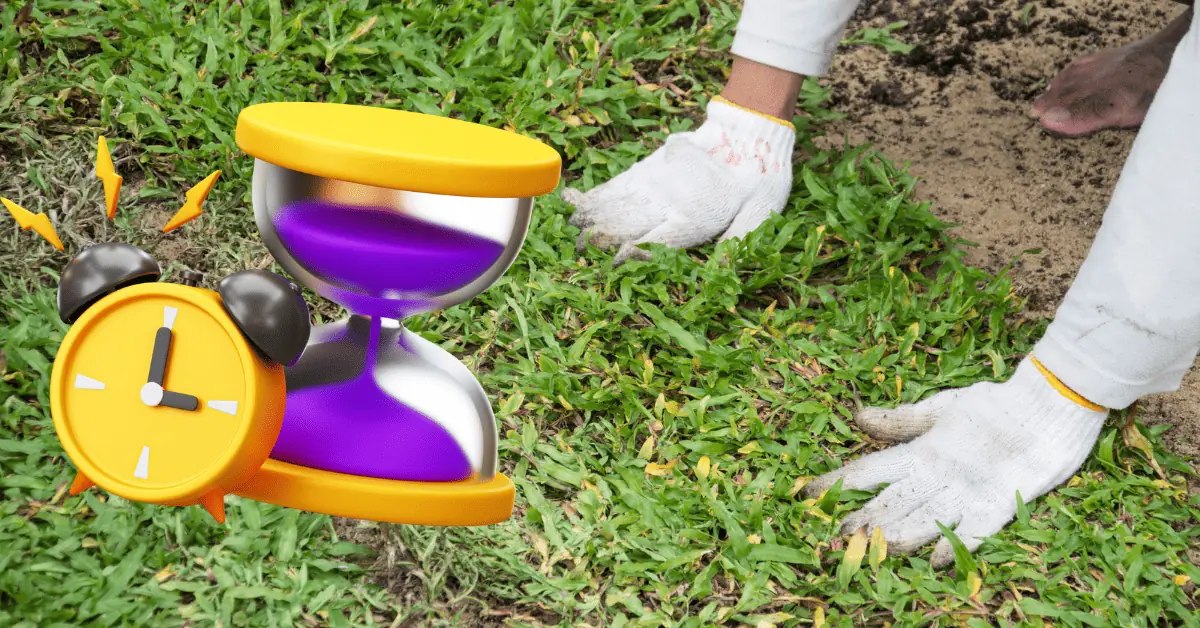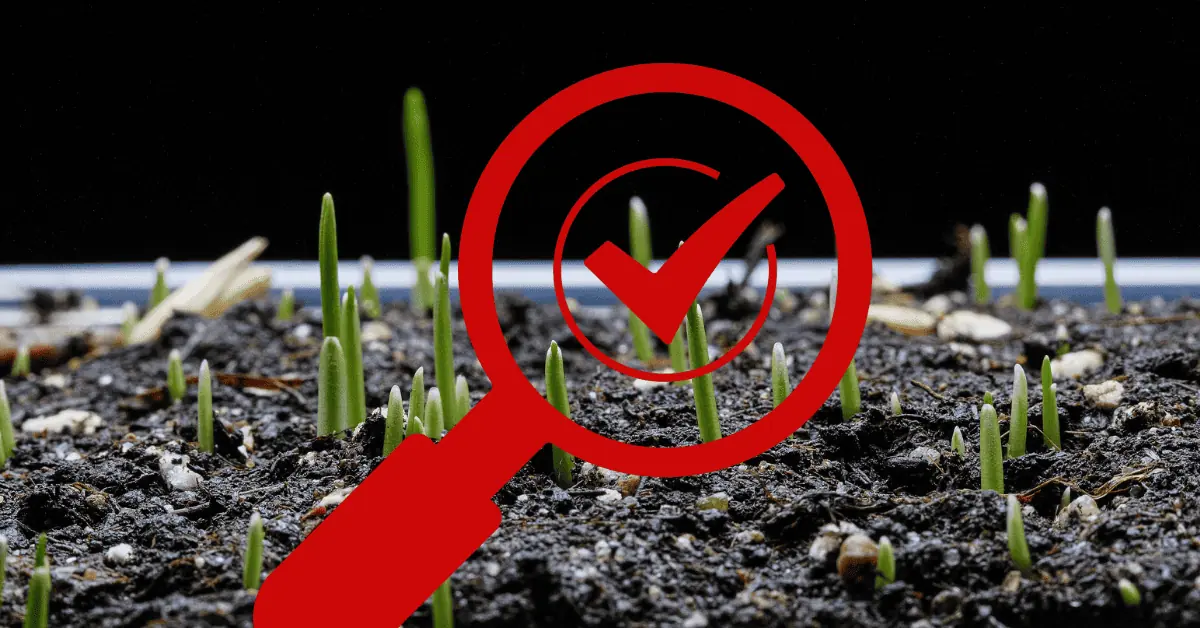Are you wondering about the best time to seed in Indiana? In Indiana, the grass is necessary for parks, lawns, and other landscaping projects.
It creates a natural backdrop, cools the air, and aids in absorbing pollutants. However, for grass seeds to germinate and develop into a healthy lawn, it is crucial to plant them at the proper time of year.
The best season to plant grass seed in Indiana will be examined in this article, considering factors that include climate, soil, regional growing conditions, and how to prepare your lawn.
Factors to Consider When Planting Grass Seed
There are things to consider before planting seeding to ensure the growth of healthy and flourishing grass. Understanding these factors will help you complete your grass-planting job and ensure that your lawn or outdoor area remains attractive and functional for many years.
1. Climate
Indiana has a moderate climate with its hot summer and cold winter. When deciding when to plant, remember that grass requires particular environmental conditions to germinate and grow.
For instance, the grass won’t grow in conditions over 90°F or below 40°F. Additionally, it might be challenging for grass seeds to germinate when planted during periods of extreme heat or droughts.
2. Soil Type
Indiana’s soil is primarily clay and loam, perfect for growing grass. However, you must make sure the soil is damp, well-drained, and between 6.0 and 7.0 degrees in pH. The grass seed will only grow if the soil is dry and acidic. Also, it’s crucial to consider the soil type in the region where grass seed will be planted.
The soil can influence the growth and establishment of potential grass seeds. Therefore, before selecting a grass seed variety, it is crucial to ascertain the soil type in the area because some grass seed varieties are more suited to some soil types than others.
For instance, whereas certain grass seed kinds thrive in heavier, more productive soils, others need well-drained soils.
3. Timing
In Indiana, timing is crucial to take into consideration. Spring or fall are often the best times to seed new grass in the state because of the lower and more humid temperatures.
This season enables the grass seed to germinate and grow before the summer’s heat hits. Additionally, planting grass seed in the spring or fall enables the grass to take root before the winter’s harsh temperatures, which can harm its growth.
When the days are warm and nights are cool, grass seed grows the fastest in Indiana. It’s also crucial to avoid planting grass seeds during drought or strong winds because these factors can make it hard for the seed to germinate and develop.
4. Seed Quality
It’s critical to purchase high-quality grass seed from a trustworthy supplier when buying grass seed. Make sure you are buying fresh, viable, and good-quality seeds because seed quality might affect the germination rate of grass seeds. High-quality seeds will make your grass-planting endeavor successful, and you will obtain the outcomes you want.
5. Planting
Preparing the place where you will plant the seeds before planting is vital. It entails clearing off existing vegetation, tilling the ground, and adding necessary fertilizers.
To guarantee that the grass seed has the best opportunity of germinating and establishing itself in the area, it is also crucial to ensure that the surface is level and debris-free.
6. Maintenance
Proper management is essential for the grass to thrive in Indiana, which entails watering, fertilizing, and mowing. It is crucial to adhere to the prescribed requirements for each variety of grass seed to ensure that the grass receives the proper care and attention it needs to thrive.
It’s crucial to eradicate any weeds in the region and stop their growth so that the health of your grass will be preserved, and weeds won’t be able to compete with it.
Best Time to Plant Grass Seed in Indiana

Spring Planting
In Indiana, spring is the best time to plant grass seeds because the longer days and warmer soil create the perfect environment for grass seeds to sprout and develop. Rainfall in the spring can also assist in maintaining soil moisture, ensuring that grass seed has access to enough water to thrive.
Autumn Planting
In Indiana, the fall is another excellent season to sow grass seed. For grass seed to take root before winter, the soil must be warm, and the days are getting shorter. Fall rains can also assist in maintaining soil moisture, ensuring that grass seed has access to enough moisture to flourish.
Summer Planting
In Indiana, summer is not the best season to plant grass seed. The seed will have trouble germinating and growing because the soil is too hot and the days are too long. In addition, summer rainfall could be more consistent, making it easier to maintain moist soil.
Winter Planting
In Indiana, winter is not an ideal time to sow grass seed. The seed will have trouble sprouting and growing because the soil is too cold and the days are too brief. Furthermore, winter rainfall can be erratic, making it challenging to maintain moist soil.
Maintaining Your New Indiana Lawn
- Soil PH: Understanding your lawn’s acidity by measuring the pH of the soil is vital for assessing the health of your lawn. By testing your soil, you will discover how acidic it is and get the knowledge you need to select the best grass seed and fertilizer.
- Select the Best Grass Seed: The temperature of Indiana is perfect for a wide diversity of grass species. Selecting grass seeds compatible with the local soil and environment is critical to maintaining a strong and thriving lawn.
- Aeration: For the best growth, aerate your new lawn. A healthier lawn will result from improved soil structure, drainage, and air exchange. Aerating your grass entails taking out small cores of dirt and letting them gradually decompose, generating tiny pockets of air.
- Fertilizer: The vital nutrients grass needs to grow and thrive are provided by fertilizer. To get a lush, green lawn, use the right fertilizer and apply it at the correct rate.
- Dethatching: Thatch accumulates dead plant matter on your lawn’s surface. Excessive thatch might eventually cause lawn diseases and poor root development. By removing this extra material, known as dethatching, your lawn will be able to grow more freely.
- Watering: Your new lawn has to be watered properly to stay healthy. Watering your lawn frequently in Indiana is crucial, especially during the hot summer; avoiding overwatering throughout the winter is equally critical.
Conclusion
In conclusion, mid-August to mid-September is the optimal time to seed a lawn in Indiana. The moment is right to take advantage of the rainfall and mild temperature, which hasten germination and assist the seed in taking root before winter arrives.
However, it’s crucial to pick the appropriate lawn grass variety for your area and to properly prepare the soil by clearing away any waste and weeds and adding compost or fertilizer. Also, keep the soil constantly moist after planting for the first several weeks, and then gradually cut down on watering as the grass grows.
Now that you know this, the above recommendations will help you create lush, healthy grass that lasts many years and gives you a lovely outside area.






